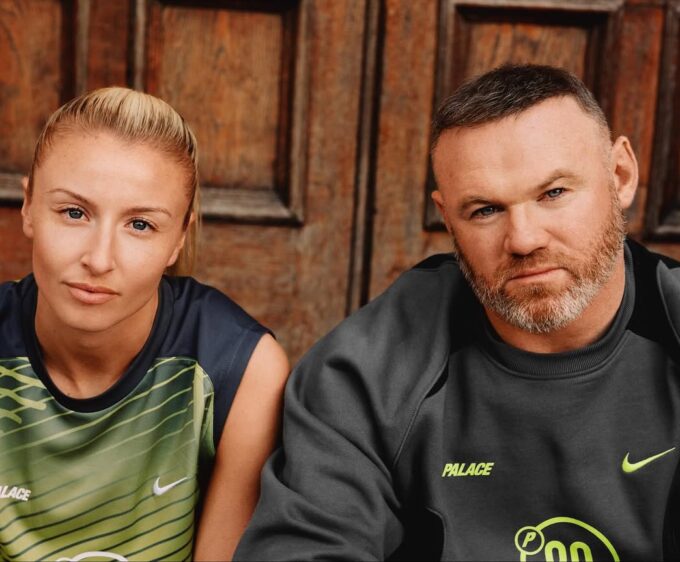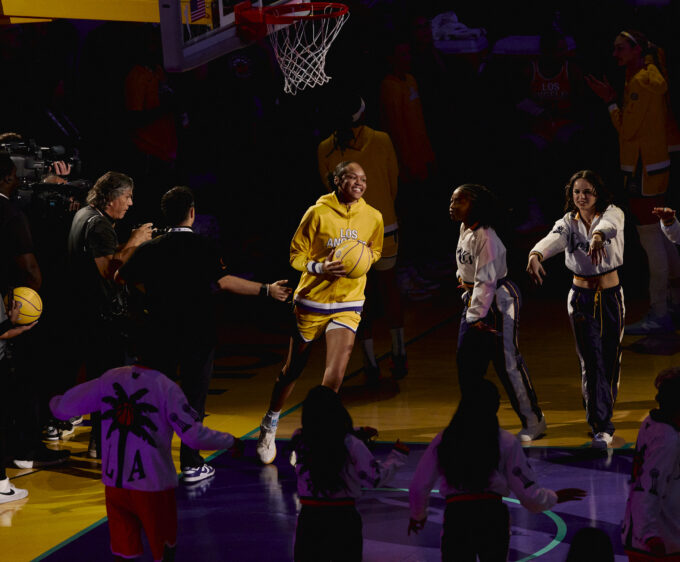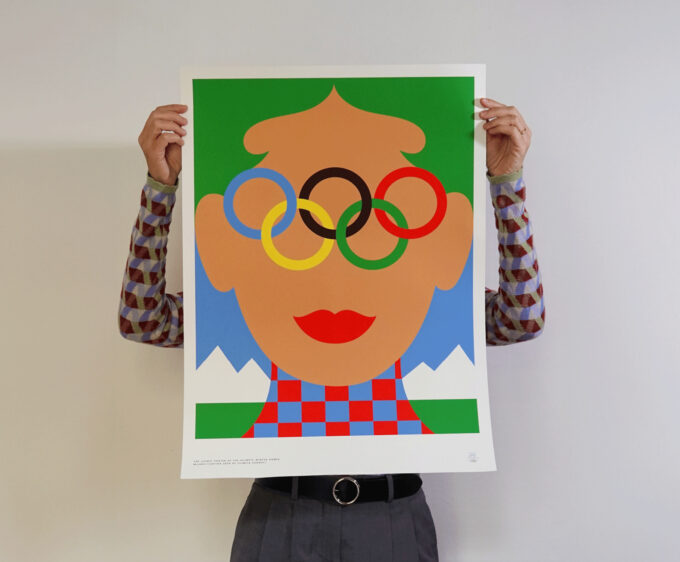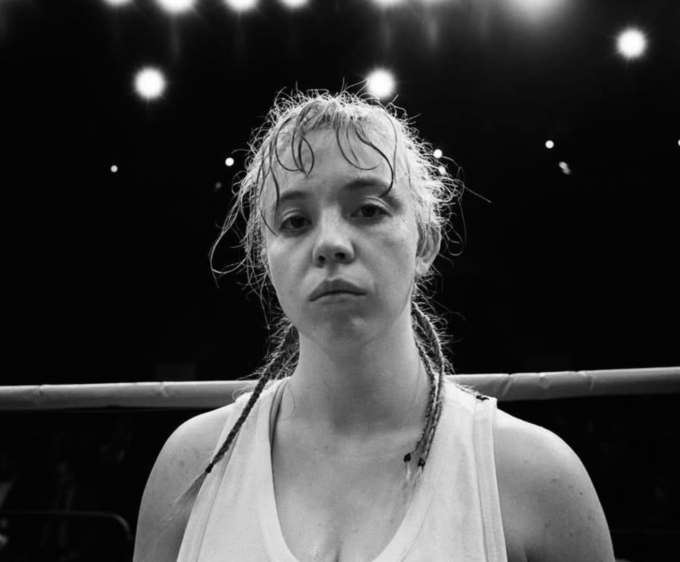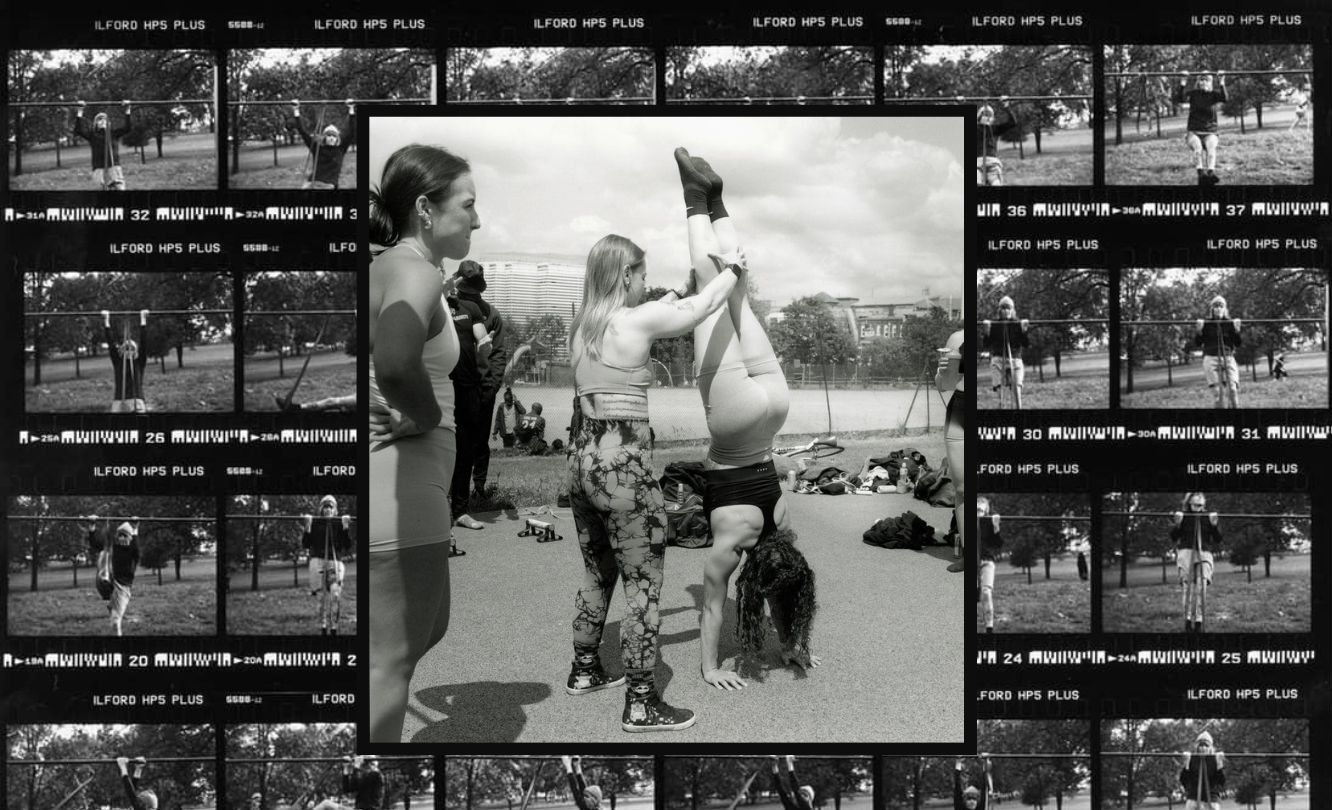
Sport of the Streets
Forget the expensive gym membership and the digital tracker. Calisthenics is a free revolution - a new form of strength built on concrete, community, and the idea that real progress belongs to everyone willing to just show up.
By Glorious
Photography By Jade Smith
Calisthenics, once tucked away in the margins of gym culture, now stretches across city parks from Brixton to Brooklyn. Beneath railway arches and between housing blocks, pull-up bars rise from concrete like monuments to strength and shared discipline. What began as a fringe pursuit has become one of the most open and democratic forms of exercise.
No fees.
No subscriptions.
No digital trackers.
You just turn up. The bar becomes the gym, the community, and the proof that progress belongs to everyone.
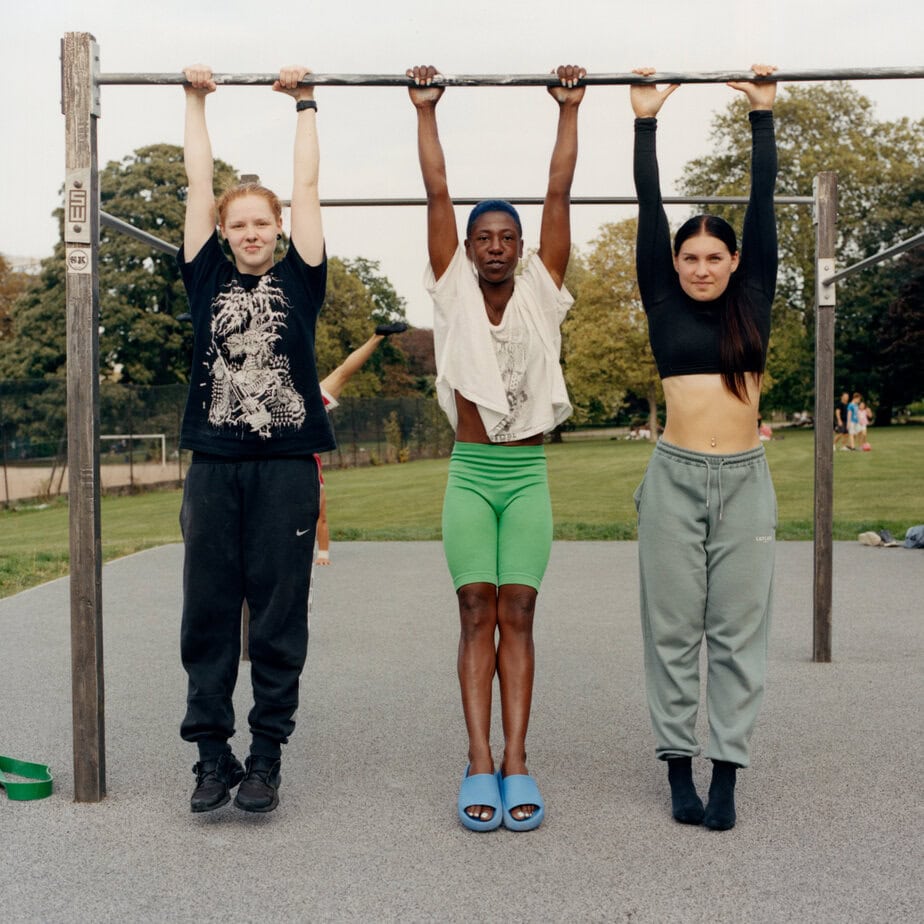
At its core, calisthenics means using your own bodyweight to build strength, control and mobility. The word comes from the Greek kallos, meaning beauty, and sthenos, meaning strength. It includes movements like pull-ups, push-ups, dips and muscle-ups. These exercises rely on rhythm and technique rather than machines or weights. What started as a training method has evolved into a culture that values patience, creativity and shared commitment.
Over the past decade, calisthenics has grown from quiet curiosity to global subculture. Outdoor gyms have become social spaces where training merges with expression. Their atmosphere feels closer to music scenes or skate crews than corporate fitness studios. The appeal lies in its simplicity. No tech, no coaching plans, no expensive kit. Just commitment. That simplicity makes it a counterpoint to commercial fitness culture. It’s a reminder that real-world strength doesn’t need branding to have meaning.
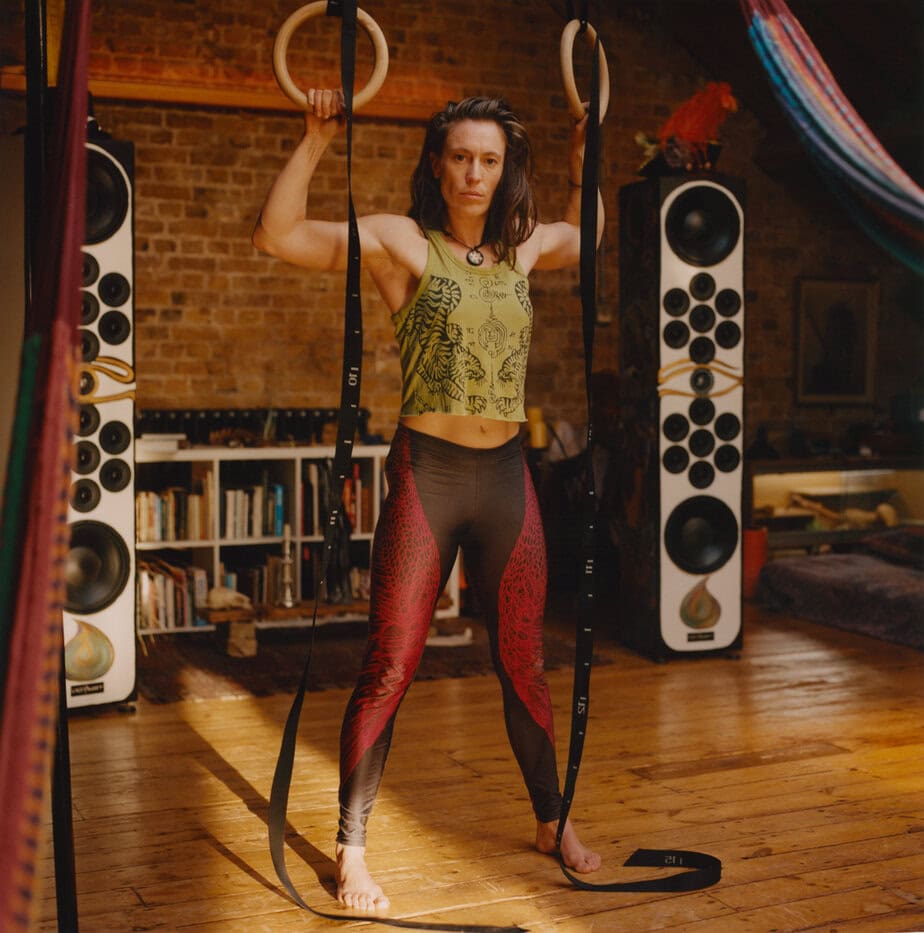
Even Nike has taken notice. Its latest campaign steps into this street-level fitness world, partnering with grassroots crews and featuring athletes training in cityscapes. The product isn’t the focus. The movement is. It’s the kind of campaign that doesn’t try to create a trend but keeps pace with one already in motion.
Calisthenics’ mainstream rise is also an economic reality. Gym memberships in the UK now average over £45 a month, with premium options pushing past £100. For many young people, fitness has become a financial privilege. Calisthenics offers an alternative that feels fair and accessible. You don’t need to buy access or approval – just time and focus. Sport England’s 2024 Active Lives study found that informal exercise in public spaces has risen 27 percent since 2018, with calisthenics among the fastest-growing forms of outdoor activity, especially for younger adults. That’s no coincidence. The freedom to train in the open, without cost or competition, fits a generation tired of barriers.
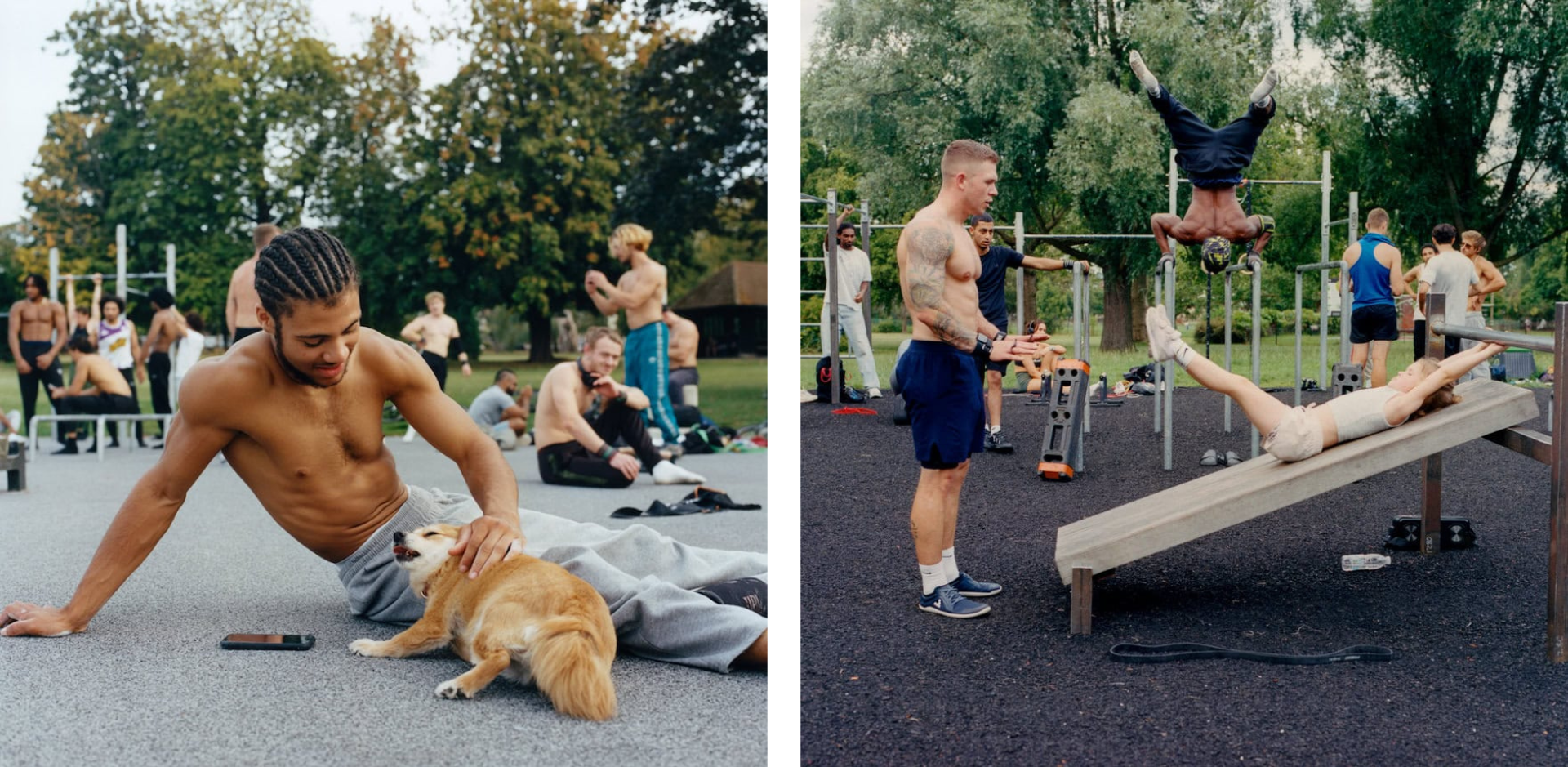
revolution
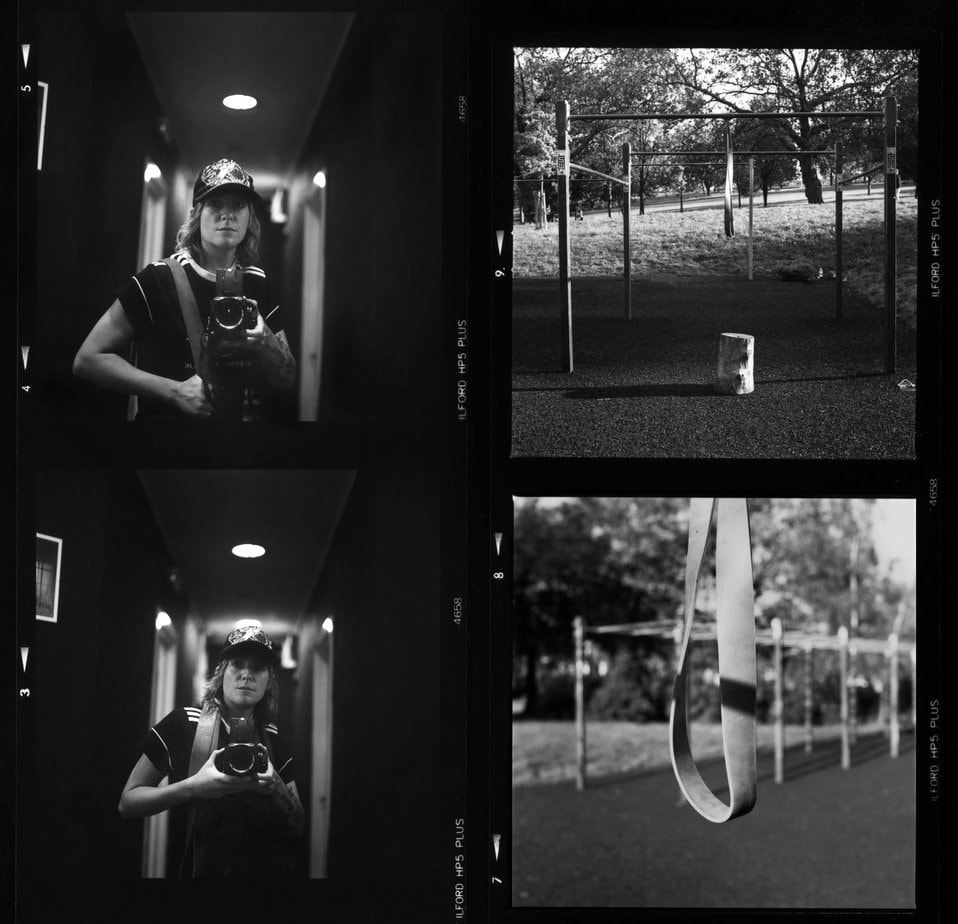
Into this world steps Jade Smith, a London-based artist, photographer and director whose love of sport and movement shapes both their work and their way of life. Jade’s ongoing project, Body in Progress, captures calisthenics at its most human. Since 2023, Jade has been training and photographing with a range of calisthenics communities across London. One of those includes a group brought together by Steel Warriors – a sport-for-good charity that transforms knives seized from the streets into outdoor gyms. The concept is both practical and symbolic, reclaiming materials once used for harm and reshaping them into spaces that foster strength and belonging. Across London, these parks have become hubs of energy and trust, open to anyone willing to step up to the bar.
“With every failure, there is always a determination to be stronger,” Jade says. “This space and mindset have inspired the progression of my own body, as well as my body of work.”
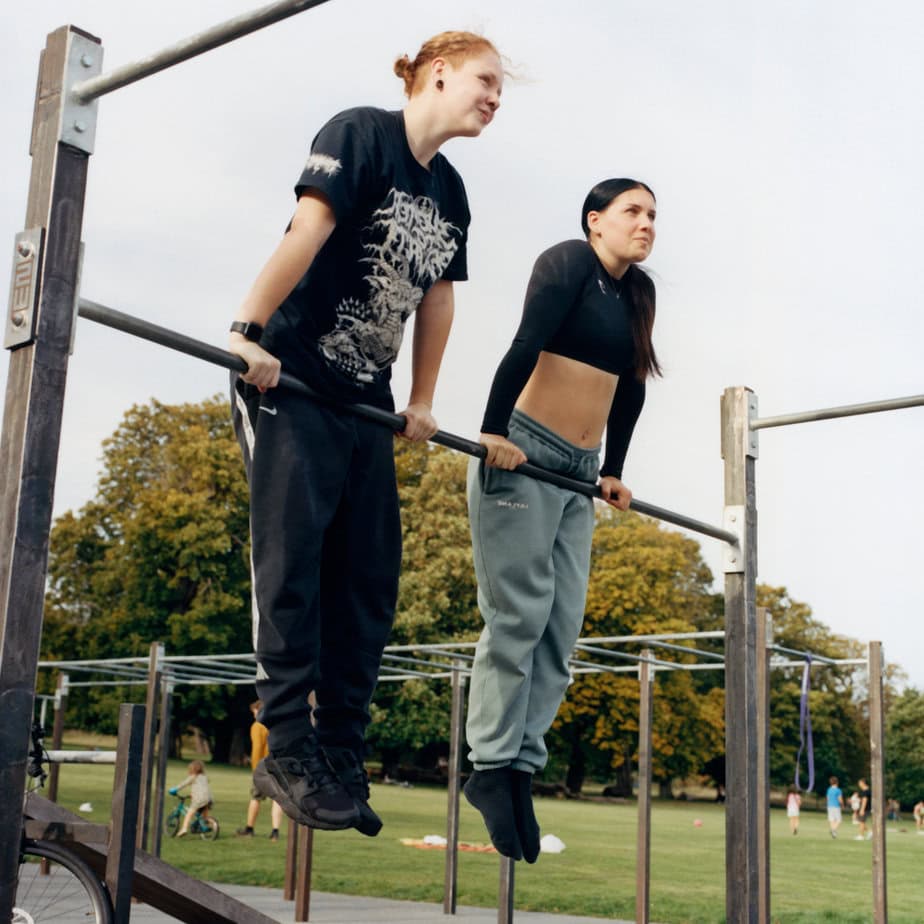
Jade’s photographs reflect that same balance of rigour and openness. Shot on film, they capture the rhythm of the park without intrusion: hands coated in chalk, laughter between sets, quiet moments of focus. Each frame carries the patience of practice, the soft defiance of effort repeated. “Sport brings people closer,” Jade explains. “It shows us that it’s never too late to learn or try something new.” The images speak to that inclusivity, showing faces and bodies united by curiosity rather than competition.
What stands out most is how naturally these outdoor spaces bring people together. There’s no membership structure or hierarchy. No divide between coach and beginner. Everyone learns by doing, and improvement is shared. The park becomes an open-air classroom where progress is measured in seconds held or moves mastered – not calories burned. The simplicity feels refreshing in a fitness world that’s grown increasingly complicated.
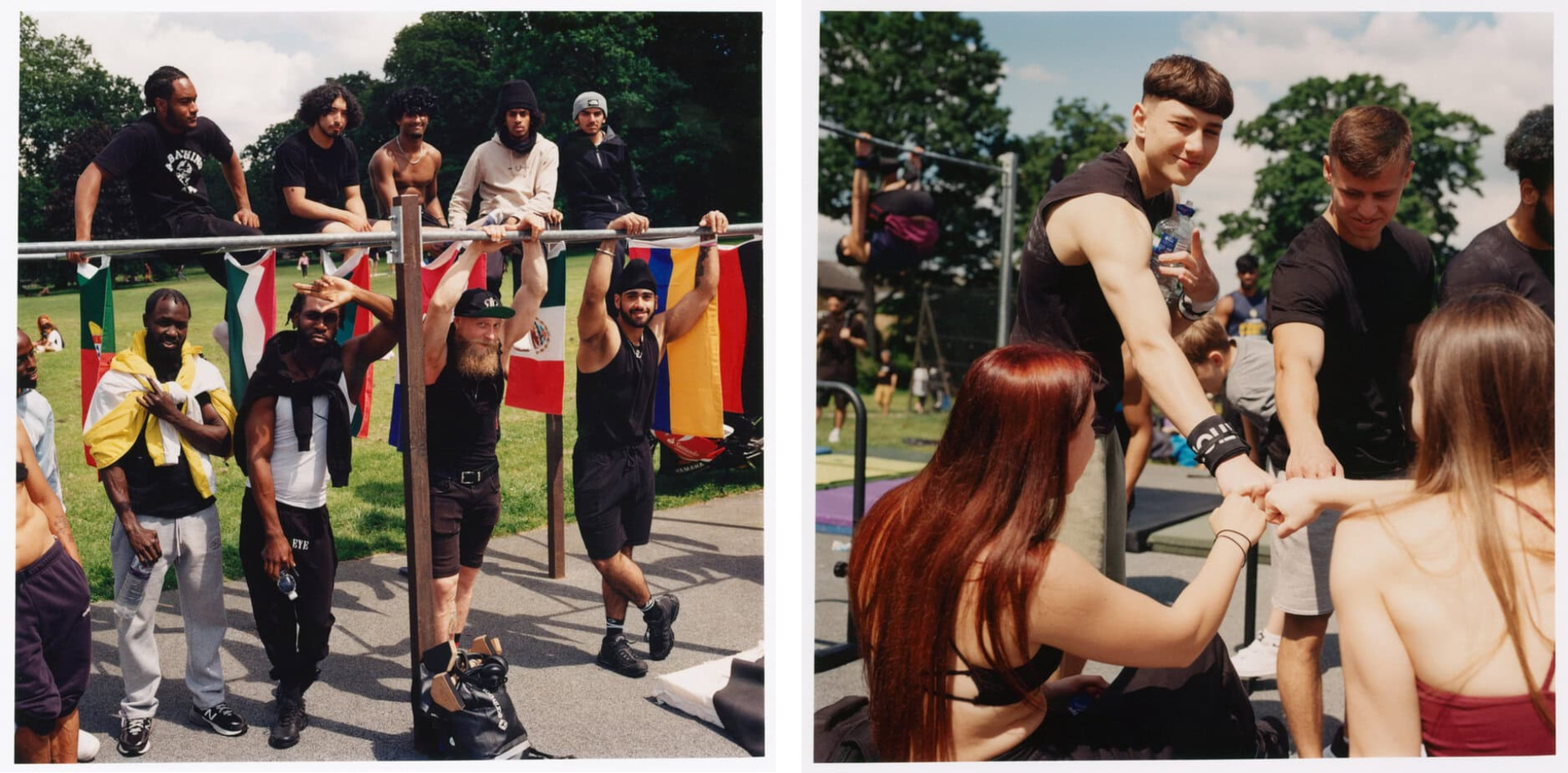
From London to Los Angeles, groups now meet at dawn and dusk. They document routines on phones or cameras, swap advice online, and gather in person to test themselves against the same steel. The scene has an edge but none of the intimidation found in many gyms. Regulars welcome newcomers. The line between teacher and teammate disappears. It’s structured but fluid, disciplined but democratic.
These spaces are changing the image of strength itself. People of every background and identity train side by side, redefining what confidence looks like in public. Research backs what’s visible in these parks. A study published in the Annals of Human Services found that regular strength training improved physical fitness and psychological wellbeing among adults, highlighting how exercise boosts mood and self-belief. That same principle plays out daily across the spaces Jade photographs, where people move freely, learning through repetition, encouraged by others who’ve been exactly where they are.
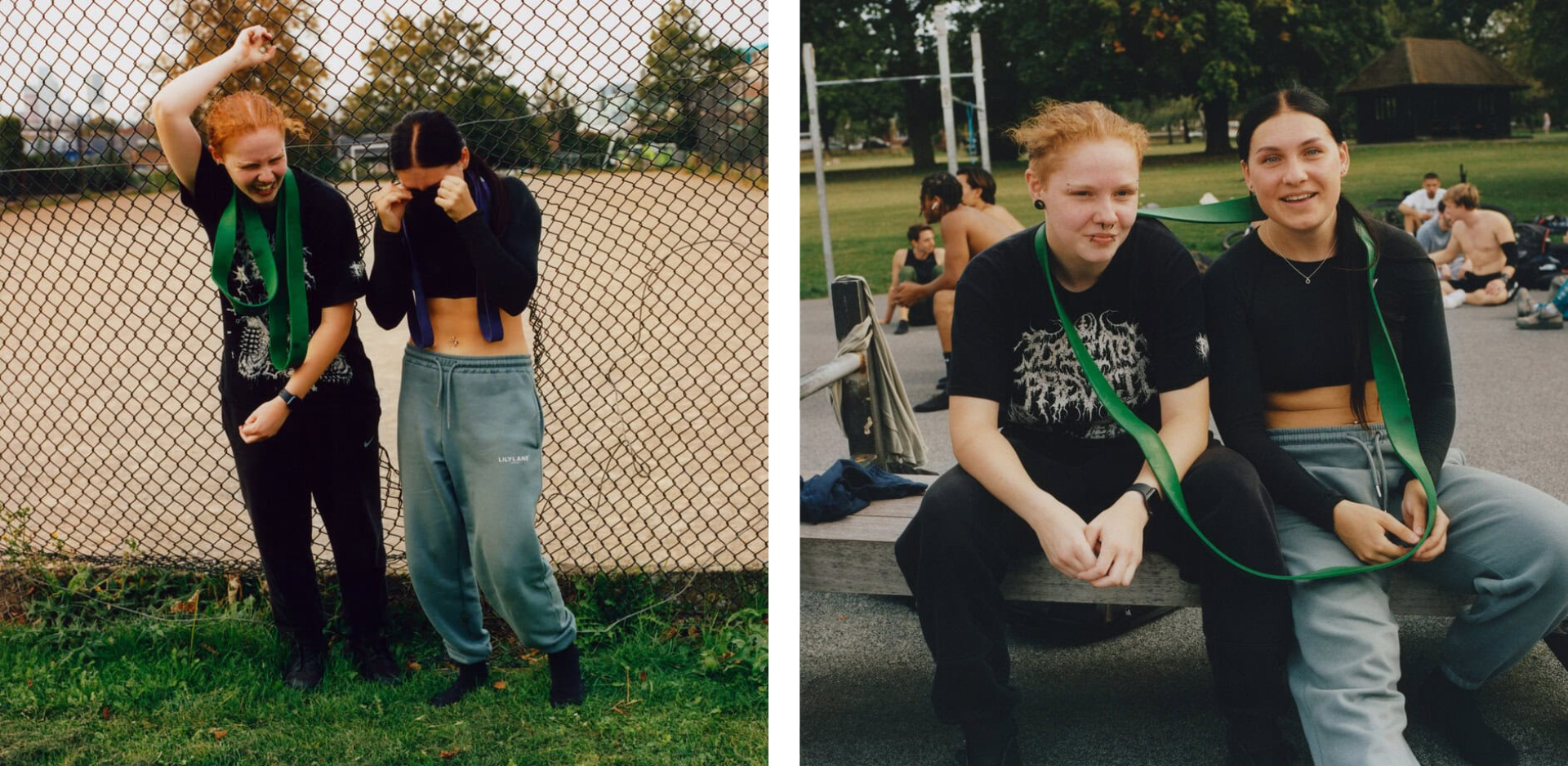
Jade’s involvement has grown alongside this change. “Over the last few years, calisthenics and gymnastics in the park have exploded,” they note. “These open spaces in our communities have created room for alternative and more creative forms of exercise.” Their artistic process mirrors the repetition of training. Each image demands the same patience as mastering a new move. The camera becomes both tool and training partner, recording moments of exertion and reflection in equal measure.
Steel Warriors’ parks have shaped this shared culture since the charity’s founding in 2017. Its outdoor gyms, built in places like Croydon, Tower Hamlets and Finsbury Park, stand as physical proof that transformation is possible. The structures themselves are unpretentious – bars, frames, concrete underfoot. Yet they hold extraordinary power as meeting points. Teenagers train beside parents. Strangers become mentors. Friendships form through repetition. Jade’s lens captures that perfectly – a quiet revolution held together by trust and persistence.
Spend an afternoon at one of these sessions and the rhythm becomes hypnotic. Music filters through portable speakers. Advice moves between sets. People stop to watch or join in. There is pride, but little ego. The scene feels raw and grounded – a space where strength builds community and community builds strength. Nobody sells anything. Nobody promises transformation. The transformation simply happens through time, sweat and conversation.
In that sense, Body in Progress is both art and testimony. It records a shift already underway, one that places authenticity over aspiration. The photographs are intimate but never indulgent, tender without sentiment. They remind us that progress doesn’t need polish. “This space has become a second home!” Jade says. The phrase sums up not just their experience but the wider ethos of the movement – that belonging can be built through effort shared in public, open to all.
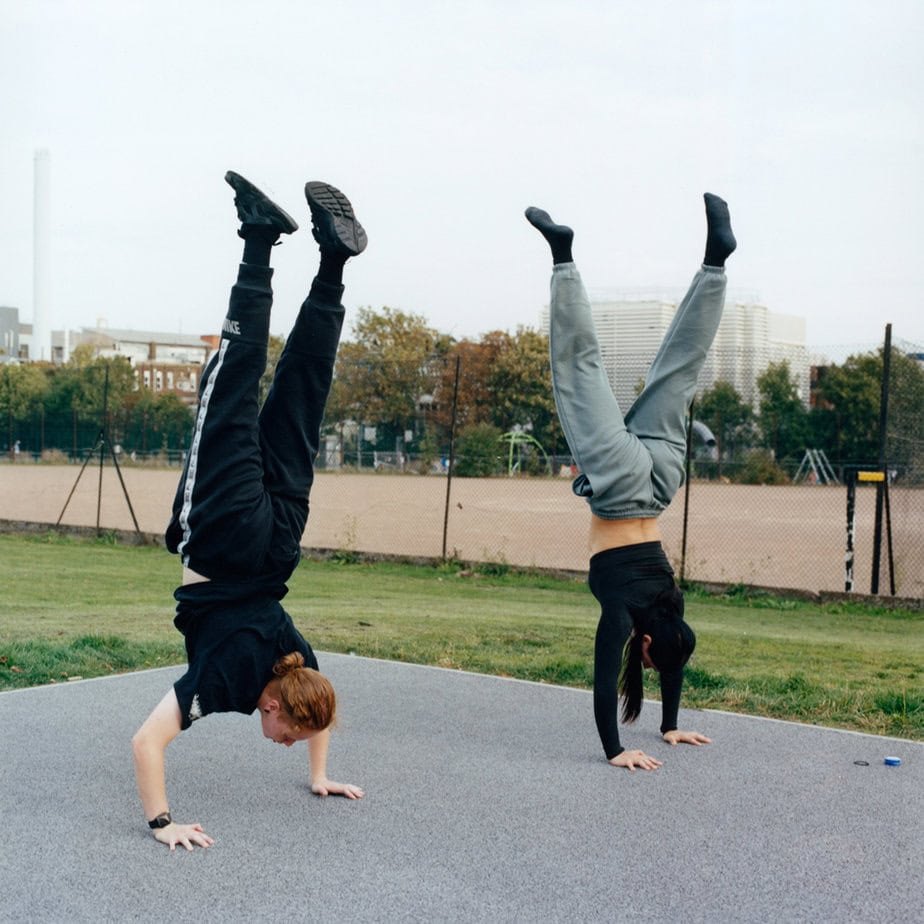
democratic
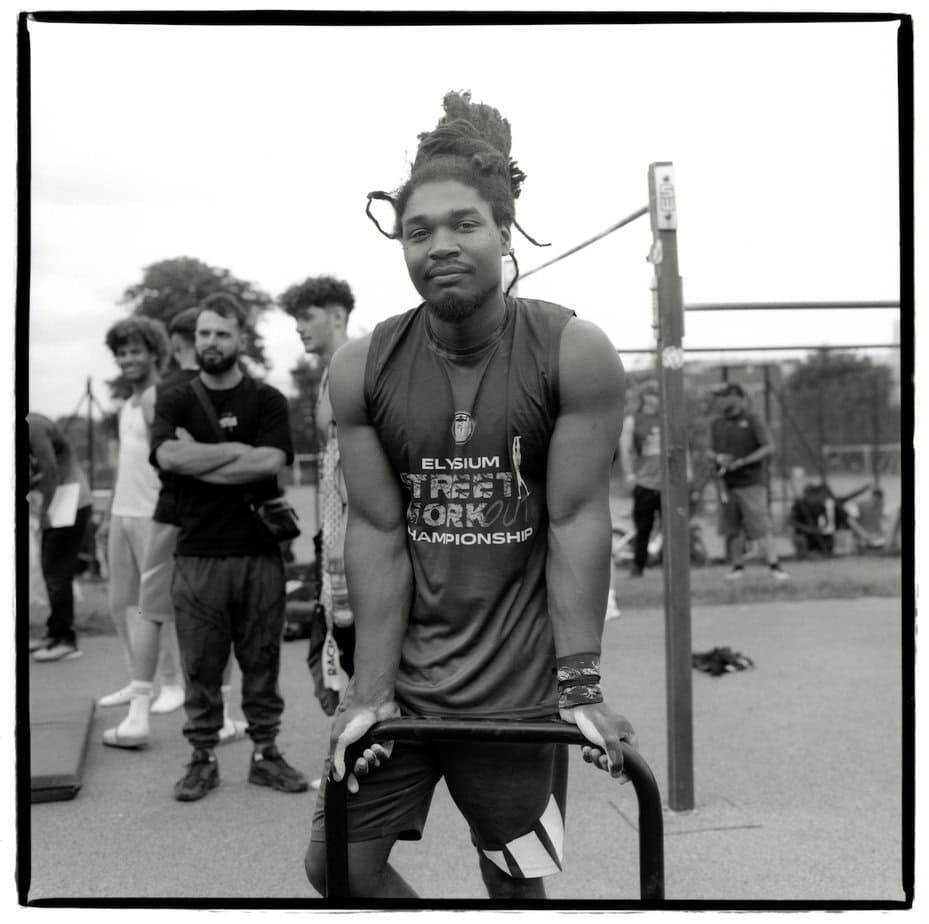
The rise of calisthenics represents something more than fitness. It’s about ownership of space, about the right to move freely and safely in the city. It reflects how people are reimagining sport from the ground up, trading exclusivity for community and replacing algorithms with accountability to one another. The bars, the laughter, the calloused hands – all of it builds something harder to quantify but easier to feel.
As Body in Progress continues to grow, it stands as both record and reflection of this shift. Jade’s work captures a moment where art, sport and social change overlap. The photos feel like field notes from a new kind of movement, one built on repetition, equality and presence. Calisthenics may never belong to brands or fitness franchises because it doesn’t need to. It thrives in public, under open skies, in the company of strangers who become teammates.
The future of this culture doesn’t depend on advertising or algorithms, but on people showing up, in rain, heat or twilight, and finding strength in one another. It’s the simplest version of sport, stripped to its essentials, still evolving, always in progress.
To learn more, visit Steel Warriors or explore Jade Smith’s Body in Progress. Follow Jade on Instagram and join the movement – wherever you are, just show up.
Editorial Design Root

